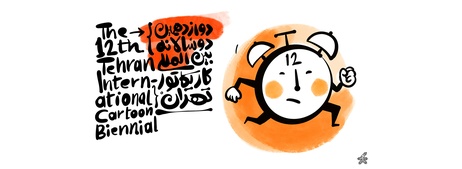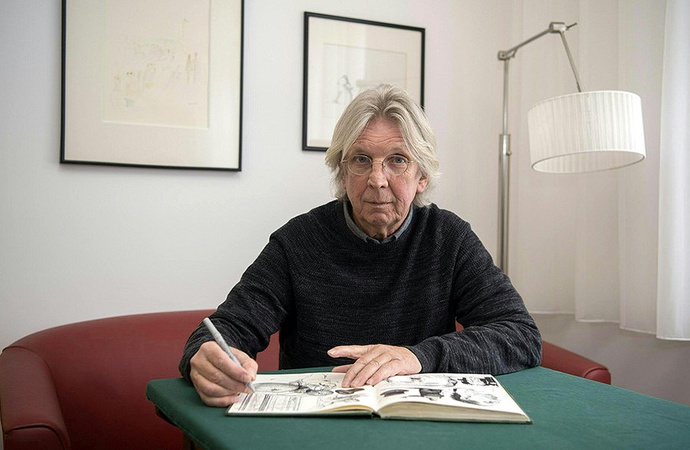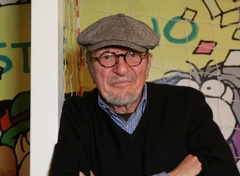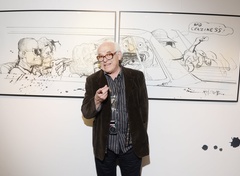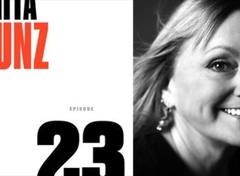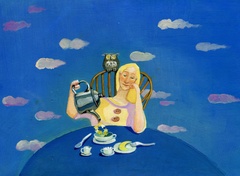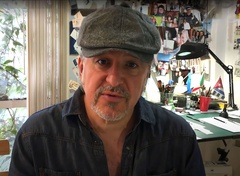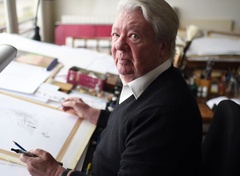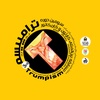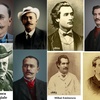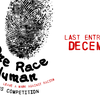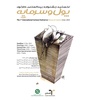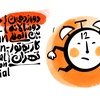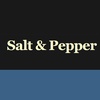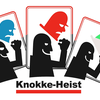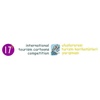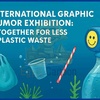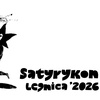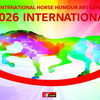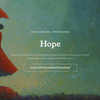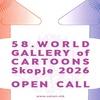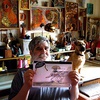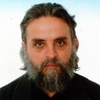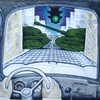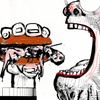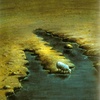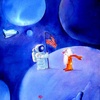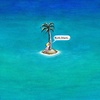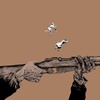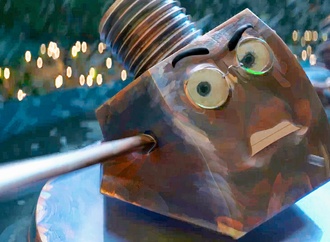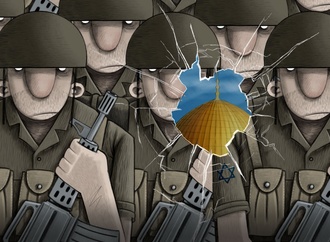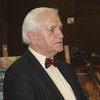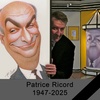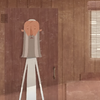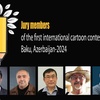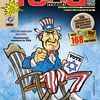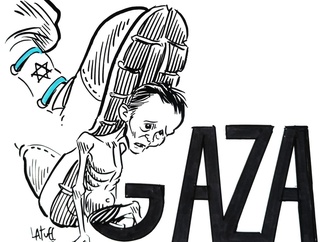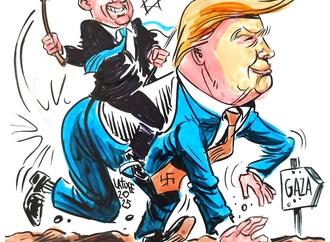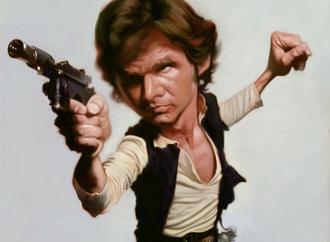by : Talal Nayer
Nayer: Can you introduce yourself to us?
Haderer: My name is Gerhard Haderer, born 1951 in Linz/Austria. I studied Graphic Design for four years, after that I worked as a graphic designer and illustrator for advertising agencies and painted panoramic maps for touristic areas in Salzburg for 15 years. That did not satisfy me, so in 1983 I quit this occupation and started drawing cartoons. These were distributed by magazines in Austria and Germany and still are today.
.jpg)
Nayer: Did academic studies influence your cartoonish style? Do you consider your style in drawing and coloring as an attempt to bridge between the classic methods of painting and the new form?
Haderer: I think that my education, notably the graphics designing of a picture, influenced my personal cartoon style. I learned how to combine graphic elements to create appealing, promotionally useful images, such as in the field of commercial advertising, to attract the attention of the audience. I was then able to use these striking elements for my cartoons, but with altered statements. This combination of opposites is probably what led to my personal style.
.jpg)
Nayer: What are the sources of inspirations of your art?
Haderer: I draw my inspiration not only from the media but above all from my daily observations of the people around me: What these people occupy themselves with, the way they dress, what excites them, what they fail at and what they believe in. From all this, images, that touch me emotionally, emerge in my mind. Humour is an essential element that makes all these observations bearable for me.
.jpg)
Nayer: Did you dedicate your art for specific themes, subjects, and issues? Or you draw spontaneously?
Haderer: There are different approaches to different topics. In my work for newspapers, I always make sure that my statements match the mood of the people who open those newspapers. During Christmastime, my picture stories play in winter, in summer they play at the beach, etc. It is different from books when a monothematic narrative is staged. And again the situation is different with my black-and-white comic strips, which appear monthly. Here, the spontaneous, fast drawing takes center stage.
.jpg)
Nayer: What are the newspapers and magazines that publish your cartoons and illustrations through your long artistic career?
Haderer: In PROFIL (Austria) and STERN (Germany) I had weekly a page for 25 years. Currently, I am being published in NEWS (Austria) and sporadically in various European newspapers. There is also MOFF, a small-format comic booklet with black-and-white drawings, which is being published monthly since 2008, and cartoon books with my own stories.
.jpg)
Nayer: Is there are anyone that you consider him/her as your artistic ideal who influence you?
Haderer: There are undoubtedly many names: from Claire Bretecher, Robert Crumb, Carl Barks, Albert Uderzo, Manfred Deix, Gottfried Helnwein, Erich Sokol to Caravaggio and countless others. Music, literature, and film, however, had an even more significant influence on my development
than graphic artists and painters had.
.jpg)
Nayer: You started last year "die Schule des Ungehorsams" or "The School of disobedience"? What is the significance of this name? Can you tell us about this institute and what are its activities, achievements, and ambitions?
Haderer: The "School of Disobedience" is an independent platform for the exchange between art and politics. It hosts various events on the premises of a former tobacco factory in Linz: cartoon exhibitions, readings, workshops and discussions on political and philosophical issues. A think tank that recognizes disobedience as the basis of any progressive development, mainly since we know that obedience in the political sense leads to the enslavement of people. Thus, the School of Disobedience is a democratic-political project that encourages people to intervene in the shaping of society through artistic means. Cartoons, cabaret, and parties are what we offer to our audiences.
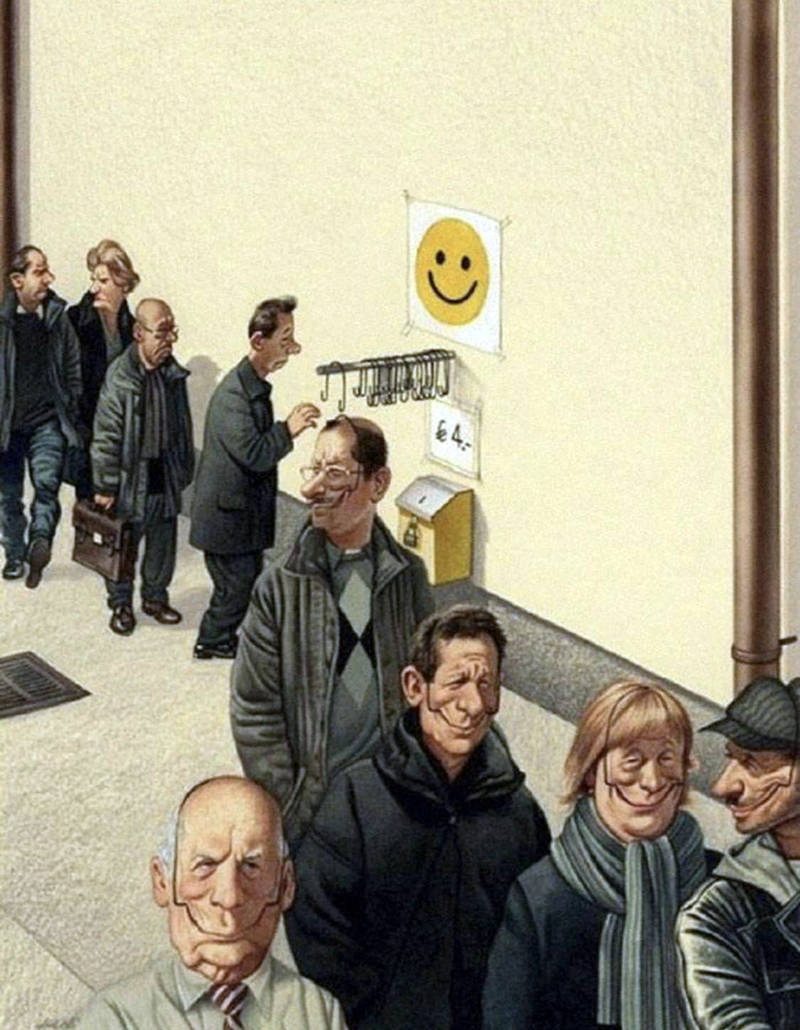
Nayer: According to your observation and experience, what is your opinion about the current situation of cartooning in Austria, Europe, and the world? What happen been changed through these years, positively and natively?
Haderer: It is said that Austria is a small biotope which serves as a sample for the big world. In the cartoon scene of this country, there were no extreme events such as in France with Charlie Hebdo, but there were always politically involved artists like Manfred Deix who provoked and polarized. In the last four decades, however, society's scale of values has changed considerably, and so has the willingness of the print media to publish such provocateurs. This trend is also evident in cabaret: entertaining comedy is the order of the day, political cabaret in the classical sense is no longer fashionable.
Nayer: Do you think that democracy is in danger because of the popularism in the world? Or there are other threats?
Haderer: Of course, this danger exists. Considering that the European democracies have only emerged in the course of the last seven decades, it is a relatively short period. Freedom, in the literal sense, means power by the people. It can only be maintained through the participation of each individual. If, however, there is more and more willing to hand this power over to populists and nationalists who only act by the motto „nothing is as successful as success“ while ignoring the fact that there can be no peace without social justice, then that is really worrying.
.jpg)
Nayer: Last year you did an interview with "Deutschlandfunk" about the elections in Austria and you were disappointed by the political atmosphere? Are the cartoonists are part of these debates or they are neutral someway or somehow?
Haderer: Over the past 70 years, the Austrian welfare state has established relatively high standards for people's lives. Sure, mistakes have also been made along the way, which needs to be rectified again and again. But at present, the foundations of this positive development are being questioned, there have been cuts in many social and cultural areas, there is the talk of redistribution from the bottom to the top. In this political climate, cartoons are indeed called to contribute to the debate. "Neutral cartoons“? I do not understand what this is supposed to be.
Nayer: Some critics assumed that the cartooning, or caricaturing is a "political art"? Are you agree with this politicalizing of art ? or cartooning is much extensive than politics?
Haderer: Cartoonists stand in the tradition of the classic court jesters. They ridicule themselves when they take themselves too seriously and attempt to shape politics. But they can at least ask the right questions.
.jpg)
Nayer: What is your impression about the diversity of schools of cartooning thought your experience and observation?
Haderer: I have already described how I developed my style: the pleasure of observing others, the joy of good cartoons, filtered through my own talent. I love stylistic extremes. A little duckling with a text bubble "Knows Karate" makes me just as happy as any opulently executed painting, which shows how much pleasure there is in the execution of this work. Long live diversity!

